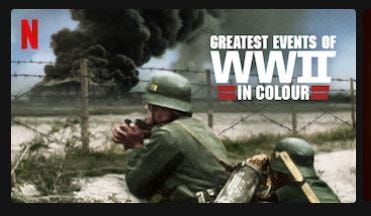Are Putin’s nuclear threats really unprecedented? Or just a logical extension of war?
Michael Klare and Ray Acheson put forward contrasting views on Putin's tactics
There were contrasting views put forward this week by two peace movement thinkers about Russian Federation President Vladimir Putin’s nuclear threats .
In The Nation Magazine on April 20, 2022, Michael T. Klare argues Putin’s order to his military commanders at the outset of the invasion of Ukraine, “to move Russia’s [nuclear] deterrence forces to a special regime of combat duty” is a turning point in modern history.
Klare writes, “Simply by making these threats, Vladimir Putin has transformed the global strategic environment in ways not seen since the height of the Cold War. Until now, it has largely been assumed that nuclear weapons would be used only as a deterrent, to discourage potential adversaries from even considering a nuclear attack for fear of catastrophic retaliation—a condition widely known as ‘mutually assured destruction,’ or MAD."
"But now, thanks to Putin, nuclear weapons have been repurposed as instruments of war—as cudgels with which to discourage an opponent from engaging in certain offensive behaviors by threatening horrific consequences to the offender. Whatever the outcome of the conflict in Ukraine, this new or repurposed use of nuclear weapons will remain an inescapable feature of any major-power crisis. And, once the threat of nuclear weapons use has been normalized in this way, it is hard to believe they will not be used, sooner or later, to demonstrate the credibility of threats like those issued by Putin,” he writes.
Simply by making these threats, Vladimir Putin has transformed the global strategic environment
MICHAEL T. KLARE
Like Klare, Ray Acheson worries Putin’s nuclear threats and the response by some analysists risk “normalizing” nuclear weapons. Writing on the website of the Women’s International League for Peace and Freedom, she says that the normalization of nuclear weapons is also part of the larger, historical project of normalizing war.
“In his book The Doomsday Machine, whistleblower and former military analyst Daniel Ellsberg explains that nuclear weapon policies grew out of the justifications for bombing cities and civilians during World War II. The willingness, and even desire, to incinerate civilians and destroy civilian infrastructure as part of the war resulted in the practices of firebombing and blanketing wide areas with explosive violence. This approach characterised the latter part of the war, with major civilian centres being deliberately targeted by allied forces long before the US detonated nuclear bombs over Hiroshima and Nagasaki."
The potential use of nuclear weapons is an extension of the explosive violence we’re already seeing
RAY ACHESON
“This history provides a disturbing story of how practices previously held abhorrent become normalised during conflict. How what was once held as anathema to 'civilised behaviour' becomes entrenched in doctrine and strategy,” says Acheson.
She continues, “The potential use of nuclear weapons is an extension of the explosive violence we’re already seeing in Ukraine, Syria, Yemen, Ethiopia, and elsewhere, and that we already saw in Iraq and Afghanistan, among others. The focus on a potential nuclear war also risks distracting from the lived reality of suffering from 'conventional war' going on right now.”
Read “Ukraine’s Nuclear Flashpoints: How to avoid Armageddon in the new nuclear era,” by Michael T. Klare, published on April 20, 22 by The Nation
Read “Don’t Normalise Nuclear Weapons and War— Abolish Them,” by Ray Acheson, published on April 19 by Reaching Critical Will
For a fascinating look back at the events leading up to the nuclear attacks on Japan by the United States in 1945, watch this episode entitled “Hiroshima” which is part of the series, Greatest Events in World War II in Colour, available on Netflix. Featuring an interview with Setskuo Thurlow.




